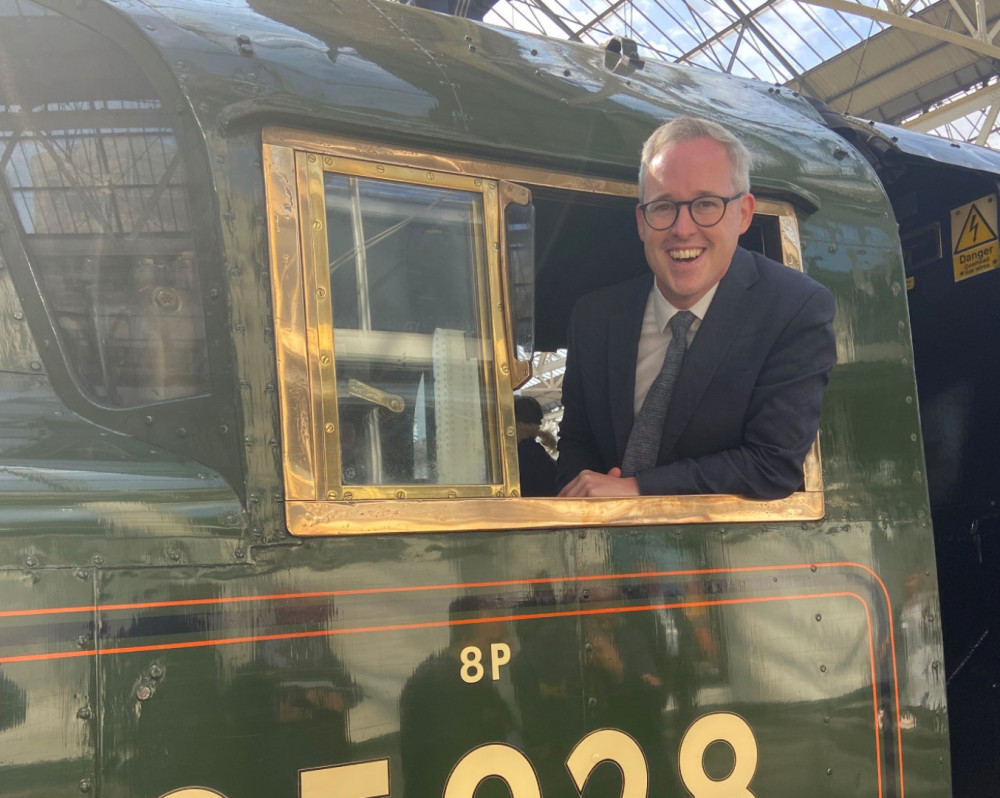Key issues
The heritage rail sector faces a number of key issues and the HRA is working for members on all of them.
The Environment
The heritage rail sector is driven by conservation and preservation - this includes the environment our members operate in.
Heritage railways provide green corridors and are home to a number of rare species. Our members protect lineside environments by actively managing trees, flora and fauna, and taking part in initiatives to enhance the landscape they operate in. In some cases this has included formal designation of some linesides as Sites of Special Scientific Interest.
Railways in popular tourist areas or national parks often operate park and ride facilities to reduce the number of cars entering sensitive areas.
The sector works hard to minimise carbon emissions and is a responsible user of fossil fuels. Guidance is in place to ensure that only the highest quality, lowest impact fuels are used in steam locomotives.
Most of the visible emissions from steam locomotives is actually steam, made of harmless water vapour. Research shows that heritage steam as a whole (including traction engines, vintage maritime and stationary steam) has a very low environmental impact.
For more information about environmental sustainability in heritage rail, please get in touch.
Coal
Heritage railways need coal.
All 170 of the UK’s heritage railways use around 35,000 tons of coal in a whole year. The fuel used in a steam locomotive is extremely high-quality bituminous coal, which produces the most possible energy and the lowest emissions.
This is a tiny proportion of the coal used in the UK as a whole. A single steel works would use more in less than three weeks. Recent figures show that the whole of the UK still burns around eight million tonnes of coal each year.
Research into alternative fuels to coal is being undertaken, and trials have been conducted in steam locomotives. At present there is no viable alternative to coal that produces a lower overall carbon footprint.
At least in the short to medium term, securing the use of high-quality coal for heritage railway and other historic steam users is vital.
The Heritage Railway Association has secured a commitment from government that the Environment Act (2021) will not lead to direct restrictions on the use of high-quality coal for steam locomotives. This major success is recognition of the important cultural and economic benefits that heritage rail brings to the UK.
This does not solve the issue of supply though. The mining of coal in the UK is in serious decline and new mines will struggle to receive planning permission. The Heritage Railway Association still believes that small quantities of UK mined coal for specialist purposes, including steam locomotives, is essential.
If UK coal is not available for specialist purposes, the only alternative will be to import coal vast distances, which will only increase the overall impact to the environment. Imported coal is also rarely of the same quality, which could also create increased emissions.
The Heritage Railway Association is working with the coal industry, governments, and other interested stakeholders to secure the best possible outcome for steam locomotive fuel.
More information on coal is available here.
Diversity
Encouraging more visitors and volunteers from diverse backgrounds to enjoy heritage rail is the aim of a new group formed by the Heritage Railway Association.
The Diversity and Inclusion Committee held its first meeting in February 2022 and starts out with a four-strong team of long-term heritage railway staff and volunteers. The group is chaired by, Julie Jones, a former Bluebell Railway General Manager who has also held a number of other senior roles in the sector. She is joined by Nicola Stone from Seaton Tramway, Sarah Piggott from the Nene Valley Railway and Joanne Crompton who is a footplate volunteer at both the East Lancashire and Llangollen railways.
The group is expected to expand to bring in further skills and knowledge on all matters relating to equality and diversity. It is believed to be the first group of its type in the heritage rail sector.
Early plans for the group include the creation of a diversity and inclusion toolkit for HRA members to bring together all of the key information managers, directors and trustees need to know on the subject. The group is also planning to create training opportunities for senior heritage railway staff and volunteers on diversity and inclusion. Their work will be made available to all Heritage Railway Association members.
Heritage Rail Safety and Standards Board (HSSB)
Heritage rail is the only part of the rail industry without its own safety and standards board. In line with other parts of the industry and with the encouragement of the ORR, the HRA has developed proposals to establish a new Heritage Rail Safety and Standards Board, which will undertake the following:
- Establish a members’ forum for the discussion of common safety issues and the exchange of experiences
- Manage the provision, development and production of a sharable set of standards, guidance and competencies to support HRA member heritage railways
- Gather industry technical and safety data and statistics, and monitor and report on the sector’s safety performance
- Circulate, publish and share safety information, experiences, relevant data and best practice to members
- Establish and provide a mechanism to publish urgent safety information and notices to members
- Assistance to members with creating and auditing SMS’s
- Provision of technical advice to members.




